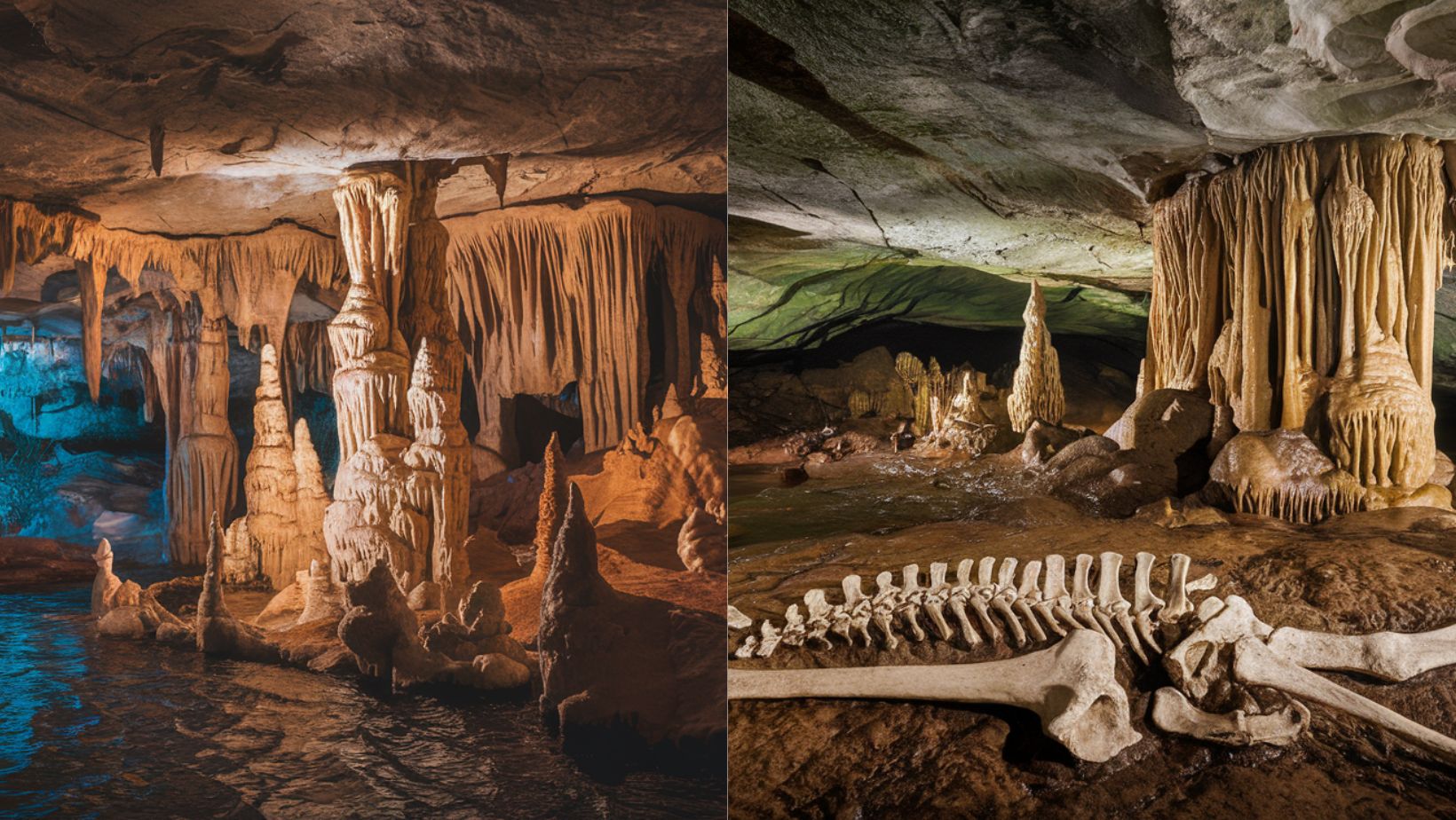Deep beneath the sun-scorched earth of an ancient continent lies a hidden world that has remained untouched for millions of years. These underground labyrinths hold secrets that challenge our understanding of Earth’s history and human origins. Within their depths, scientists continue to uncover evidence that rewrites the timeline of life itself, while indigenous legends speak of creatures that still lurk in the darkness.
The Underground Time Capsule That Predates The Dinosaurs
The Jenolan Caves system stands as the world’s oldest known open caves, with recent dating techniques revealing them to be an astounding 340 million years old. This makes them significantly older than the dinosaurs themselves, offering a window into a time when life was just beginning to crawl out of the primordial seas.
What many don’t know is that new chambers are still being discovered today. In 2020, explorers found a previously unknown passage containing crystal formations that had been growing undisturbed for over 100,000 years. The caves also harbor unique blind cave creatures that exist nowhere else on Earth, including albino spiders and translucent crustaceans that have evolved in complete darkness for millions of years.
Perhaps most intriguingly, scientists recently discovered evidence of ancient human habitation dating back 50,000 years, making these caves one of the oldest continuously visited sites by humans in the world. Some passages still bear the marks of torch smoke from thousands of years ago, preserved by the cave’s unique atmospheric conditions.
The Underground Graveyard Where Extinct Giants Still Stand
The Naracoorte Caves represent one of the world’s most complete fossil records of the Pleistocene epoch. Within these limestone chambers lies a graveyard of extinct megafauna so well preserved that scientists can reconstruct entire ecosystems. The most remarkable discovery was a complete skeleton of the Thylacoleo carnifex, the largest marsupial predator ever to have existed.
Unknown to most visitors, the caves contain a “ghost chamber” where the bones of thousands of animals that fell through hidden entrances over millennia created complete skeletal puzzles of extinct species. Recent analysis of these remains revealed evidence of previously unknown species, including a giant kangaroo that stood over 10 feet tall and weighed more than a modern car.
The caves also preserve evidence of ancient climate changes, with each layer of sediment telling a story of dramatic environmental shifts. Scientists have identified at least 118 different vertebrate species, with new discoveries being made regularly. The most recent finding includes fossils of birds previously thought to have never existed in Australia.
The Sacred Cave Where Ancient Spirits Still Whisper
Ngilgi Cave holds a special place in Aboriginal mythology as the battleground between good and evil spirits. According to Wardandi legends, the cave was formed during an epic battle between the good spirit Ngilgi and the evil spirit Wolgine. Beyond its spiritual significance, the cave contains archaeological evidence that challenges our understanding of Aboriginal history.
Recent discoveries include ochre paintings hidden in almost inaccessible chambers, suggesting ritual uses that predate Egyptian hieroglyphs. The cave’s acoustic properties have also attracted scientific attention – certain chambers produce perfect resonance at frequencies matching ancient Aboriginal musical instruments, leading researchers to believe these spaces were deliberately chosen for ceremonial purposes.
The most remarkable feature is a chamber nicknamed the “whispering room,” where the unique acoustics allow sounds to travel in ways that defy normal physics. Some Aboriginal elders maintain that these acoustic properties were used for communication with ancestral spirits.
The Underground Cathedral That Sings
Cathedral Cave stands as nature’s own gothic masterpiece, with limestone formations that mirror the architectural elements of Europe’s greatest cathedrals. What makes this cave truly extraordinary is its perfect natural acoustics, producing reverberations that last for up to 29 seconds – longer than many man-made concert halls.
Hidden within its depths is a chamber containing helictites – gravity-defying formations that grow in all directions, seemingly breaking the laws of physics. Scientists still debate the mechanisms behind their formation. The cave also houses a unique species of glow worm that exists nowhere else on Earth, creating natural constellations on the cave ceiling.
Most surprisingly, researchers recently discovered that the cave’s limestone walls contain microscopic fossils of marine creatures from an ancient sea that covered the area 400 million years ago. These fossils are so well preserved that they reveal details about extinct life forms previously unknown to science.
The Crystal Kingdom That Grows In The Dark
The Capricorn Caves feature some of the most unusual limestone formations ever discovered. Unlike typical stalactites and stalagmites, these caves contain helictites that grow horizontally and even upward, defying gravity. Scientists recently discovered that some of these formations are still actively growing, adding mere millimeters every century.
The caves harbor a phenomenon known as “cave pearls” – perfectly spherical formations created by water droplets and calcite crystals over thousands of years. Some chambers contain pools of crystal-clear water so still and transparent that visitors have walked into them, thinking they were looking at empty space.
Most remarkably, the caves contain evidence of ancient megafloods that once filled them completely, leaving behind wave-cut notches in the ceiling that tell stories of catastrophic climate events from Earth’s distant past. Recent archaeological excavations have also uncovered tools and artifacts suggesting that these caves served as emergency shelters during extreme climate events thousands of years ago.
